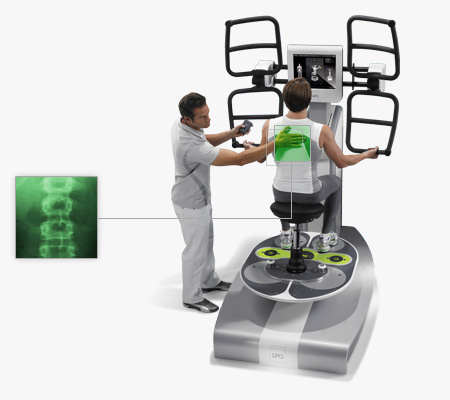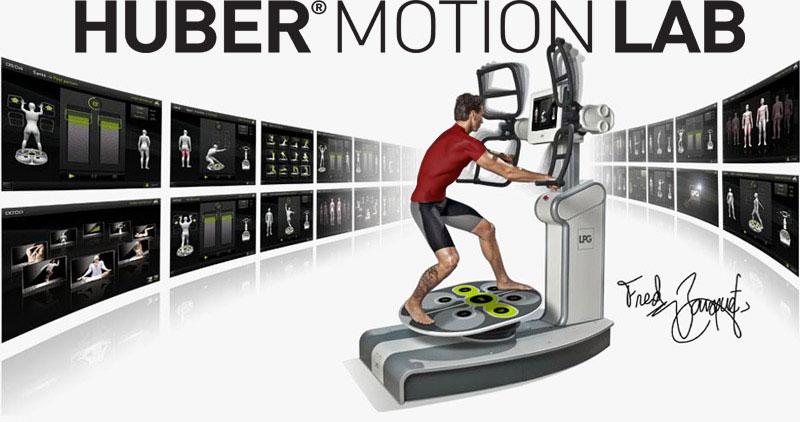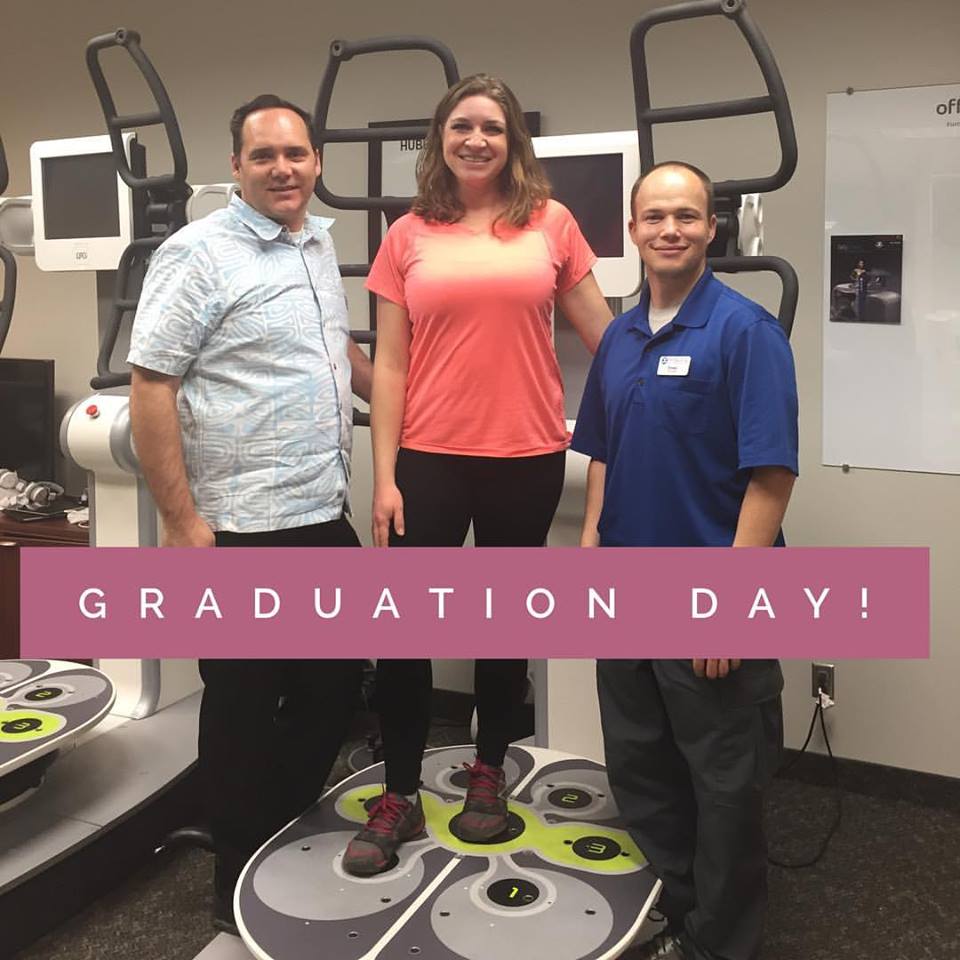Contact Info
- 3000 N. University Ave Suite 100, Provo, Utah
- 801-310-0851
Instruction Download
HUBER
HUBER MOTION LAB is... A 3-D exercise like nothing else in the world! Lower, middle, upper, right and left, front and back, your entire body is fully engaged... All of your muscle chains get reactivated, all muscle groups are compelled to work together. The oscillating platform generates instability for the lower body... the mobile column creates instability for the upper body... handles capture the strength... the feedback on the screen provides information and the body adapts.
ONLY MACHINE CAPABLE OF STRENGTHENING 180 DEEP SPINAL MUSCLES
HUBER MOTION LAB is a true human motion laboratory that improves physical abilities while strengthening core posture muscles. It is the only known machine in the world capable of strengthening the 180 deep spinal muscles simultaneously, precisely targeting the deep muscles of the spine. This breakthrough interactive and pre-programmed technology is unique in the world in its ability to strengthen and condition the 180 deep spinal muscles and surrounding joints, restoring motion and fluidity to all movement.
Huber Motion Lab is perfectly engineered for rehabilitation for all types of physical therapy patients from athletes to elderly. It also allows you to quickly enter into the fat-burning zone in only 3 minutes and is a complimentary device for those receiving lipomassage for cellulite reduction.
This state-of-the-art equipment sets the body in motion with an oscillating platform and mobile column. It mobilizes joints while gently and safely recruiting the deep muscles which are often neglected by traditional physical exercise. It helps improve strength, flexibility, joint amplitude, coordination, posture and balance. The Motion Lab uses a unique technology that improves physical abilities while strengthening core posture muscles – with applications in health, beauty and sport.

what can be rehabilitated with this machine?
In healthcare specifically, for more than 90% of the most common physical therapy conditions, rehabilitation exercises can be performed with the Huber Motion Lab.
Trauma
Early muscle mobilization and on-going proprioceptive work. Proactive exercises that protect joints and prevent pain.
Cardiology
Complete muscle recruitment with constant movement with no cardiac overload. Features on-screen heart rate monitor.
Orthopedics
Quantifiable load of lesion. Integration of the correction in both postural and functional planes. Muscle weaknesses are targeted.
Podiatry
Foot and ankle problems are rehabilitated.
Urogynecology
Gradual restoration of the pelvic floor with the HU-Seat’s controlled pelvic tilt.
Rheumatology
Controlled exercises with magnitude and speed differentials that target multiple joints, and passive spinal muscle recruitment. Operation is based on patient’s sensation.
Geriatrics
Engaging interface combines vestibular, muscular and articular exercises that are perfectly adapted to aging patients’ physiology. Balance and gait problems are rehabilitated.
Neurology
Constant neuromuscular integration through visual feedback and dual-purpose exercises. Normalizes gait pattern.

Effects of feedback-based balance and core resistance training vs. Pilates training on balance and muscle function in older women: a randomized-controlled trial.
Abstract
BACKGROUND:
Aging is associated with decline in physical function that could result in the development of physical impairment and disability. Hence, interventions that simultaneously challenge balance ability, trunk (core) and extremity strength of older adults could be particularly effective in preserving and enhancing these physical functions.
OBJECTIVE:
The purpose of this study was to compare the effects of feedback-based balance and core resistance training utilizing the a special computer-controlled device (Huber®) with the conventional Pilates training on balance ability, neuromuscular function and body composition of healthy older women.
METHODS:
Thirty-four older women (age: 70±4 years) were randomly assigned to a Huber group (n=17) or Pilates group (n=17). Both groups trained for 8 weeks, 3 times a week. Maximal isometric strength of the trunk flexors, extensors, and lateral flexors, leg power, upper-body strength, single- and dual-task static balance, and body composition were measured before and after the intervention programs.
RESULTS:
Significant group×time interactions and main effects of time (p<0.05) were found for body composition, balance ability in standard and dual-task conditions, all trunk muscle strength variables, and leg power in favor of the Huber group. The observed improvements in balance ability under both standard and dual-task conditions in the Huber group were mainly the result of enhanced postural control in medial-lateral direction (p<0.05).
CONCLUSION:
Feedback-based balance and core resistance training proved to be more effective in improving single- and dual-task balance ability, trunk muscle strength, leg power, and body composition of healthy older women than the traditional Pilates training.
https://www.ncbi.nlm.nih.gov/pubmed/26036209
2015 Sep-Oct;61(2):117-23. doi: 10.1016/j.archger.2015.05.009. Epub 2015 May 27.
Copyright © 2015 Elsevier Ireland Ltd. All rights reserved.
What do our patients say about Muscle IQ?
"I am so impressed with the team at Muscle IQ. Dr. Howard Knudsen is excellent at diagnosing and treating physical problems and thoroughly explaining treatment goals and options. I have experienced nerve and muscle pain and weakness for several years and EVERY time I leave his office I feel better. My posture is straighter. My pain is less. My level of hope has skyrocketed! I am treated with dignity, kindness and encouragement! Love this office!!! " -Sharri
